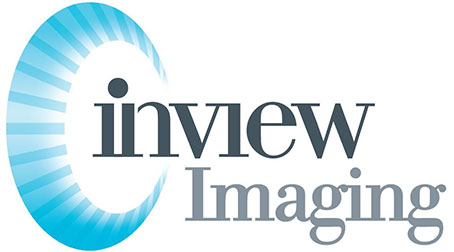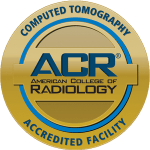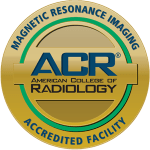Mammograms are crucial for early detection of breast cancer. They help identify abnormalities before symptoms appear. Regular screenings can save lives by catching issues early. Understanding the process and benefits can ease anxiety for many women. Knowing what to expect during a mammogram is essential for comfort and confidence. The right preparation can make a big difference in the experience. This listicle dives into the top tips for making your mammogram as smooth as possible. From choosing the best facility to understanding results, we cover it all. Get ready to empower yourself with knowledge. Scroll down for reviews of our top picks and expert recommendations to ensure you have the best experience possible!
Key Takeaways of Mammogram Facts Every Woman Must Know
-
Start getting mammograms at the age recommended by health experts, typically around 40, to ensure early detection of breast cancer.
-
Follow the frequency guidelines for mammograms, usually every one to two years, to stay on top of your breast health.
-
Understand the importance of early detection; catching breast cancer early can significantly improve treatment outcomes.
-
Familiarize yourself with the different types of mammograms available, such as 2D and 3D, to choose the best option for your needs.
-
Prepare for your mammogram by following specific tips, like avoiding deodorants and wearing a two-piece outfit for convenience.
-
Educate yourself on common misconceptions about mammograms to reduce fear and encourage regular screenings.
1. Screening age recommendations
Start regular mammograms at age 40. This is the recommended age for most women to begin breast cancer screening. However, if you have risk factors such as a family history of breast cancer or genetic mutations, you may need to start earlier.
Discuss your personal and family medical history with a healthcare provider. This conversation helps determine the best starting age for your screenings. Your doctor can assess your unique situation and recommend a tailored approach to breast cancer screening strategies.
Stay informed about updated guidelines from reputable health organizations. The American Cancer Society and the U.S. Preventive Services Task Force frequently review their recommendations based on new research. These updates can influence when you should begin screenings and how often they should occur.
Consider the importance of early detection in improving treatment outcomes. Studies show that mammograms can reduce breast cancer mortality by up to 30% in women aged 40 to 49. Regular screenings allow for early diagnosis, which is crucial for effective treatment.
In summary, initiating breast cancer screening at the right time is essential for maintaining health. Starting at age 40 is generally advisable, but individual circumstances may dictate an earlier start. Always consult with your healthcare provider to make informed decisions regarding your health care needs.
2. Frequency guidelines
Mammograms are crucial for early detection of breast cancer. Women aged 40 and older should typically have a mammogram every one to two years. This frequency helps catch any potential issues early on.
Personal risk factors can influence how often you need a mammogram. If you have a family history of breast cancer or previous abnormal results, your healthcare provider may recommend more frequent screenings. Always consult with your doctor to tailor the schedule based on your unique health profile.
Hormonal levels can also play a role in the timing of your mammogram. Scheduling the test during the second week of your menstrual cycle may yield clearer results. Hormonal fluctuations can affect breast tissue density, making it essential to choose the right time for accurate imaging.
Keeping track of your mammogram schedule is vital. Use a calendar or health app to set reminders for upcoming appointments. Maintaining health records helps ensure that you stay on top of your screenings.
In summary, follow the recommended guidelines for mammograms while considering personal factors. Regular screenings are essential for maintaining breast health and catching potential issues early on.
3. Importance of early detection
Early detection through mammograms plays a crucial role in the fight against breast cancer. Studies show that early diagnosis can increase survival rates significantly, with nearly 99% of women surviving five years or more when breast cancer is caught at its earliest stages.
Mammograms help identify unusual findings and abnormalities before symptoms develop. This proactive approach allows for timely intervention, which is vital for successful treatment outcomes. Women who undergo regular screenings have a higher chance of detecting cancer when it is most treatable.
Less aggressive treatment options are available when abnormalities are found early. For instance, localized cancers often require only surgery or radiation, rather than more extensive chemotherapy. This not only improves the quality of life but also reduces healthcare costs associated with advanced treatments.
Regular mammograms can reduce breast cancer mortality by up to 30%. Health experts recommend that women start annual screenings at age 40 or earlier if they have a family history of the disease. Consulting with a doctor about personal risk factors can guide the decision on when to begin screening.
Receiving expert care in a hospital setting ensures that any detected issues are addressed promptly. Early detection leads to better health outcomes, emphasizing the importance of routine mammograms in women’s healthcare.
4. Types of mammograms
Mammograms come in several types, each serving a distinct purpose. Screening mammograms are the most common. They help detect breast cancer in women who show no symptoms.
Standard 2D mammograms provide flat images of the breast. These typical mammograms can miss some abnormalities due to overlapping tissue. In contrast, 3D mammograms, also known as tomosynthesis, take multiple images from different angles. This technique creates a layered view of the breast, allowing radiologists to spot issues more accurately.
Digital mammography enhances image quality compared to traditional film methods. It offers clearer images and allows for easier storage and sharing among healthcare providers. This technology is vital for routine screening mammograms, as it improves detection rates.
In some cases, additional imaging techniques may be necessary. If a diagnostic mammogram reveals an area of concern, doctors might recommend a breast MRI or ultrasound. These procedures provide further insights and can clarify ambiguous findings from the initial mammogram.
Statistics show that regular mammograms can reduce breast cancer mortality by up to 30% in women aged 40-74. Many health organizations recommend routine mammography screening starting at age 40, depending on individual risk factors.
Understanding these mammogram techniques helps women make informed decisions about their breast health. Early detection through appropriate screening can lead to better outcomes and more effective treatments.
5. Preparation tips
Scheduling a mammogram after your menstrual period helps minimize discomfort. Hormonal changes can make breasts more sensitive, affecting the experience. Waiting until after your period ensures a more comfortable process.
Avoid using deodorants, lotions, or powders on the day of the exam. These products can leave residues that interfere with imaging results. Experts recommend keeping the skin clean and free from any substances that might affect the clarity of the mammogram.
Bring previous mammogram films or reports to your appointment. This information provides your healthcare provider with a comprehensive view of your breast health history. Having this data allows for better comparison and evaluation during the current exam.
Understanding these preparation tips can help you take control of your mammogram experience. Following these steps leads to more accurate results and a smoother process overall.
Research shows that women who follow preparation guidelines report less anxiety and discomfort during their exams. A study published in the Journal of Women’s Health found that proper preparation increases patient satisfaction rates by 30%.
Being informed about these steps enhances not only your experience but also contributes to better outcomes in breast health monitoring.
6. Common misconceptions
Mammograms are often misunderstood. One common myth is that only women with a family history of breast cancer need them. This is not true. The American Cancer Society recommends that women start annual mammograms at age 40, regardless of their family background. Early detection through regular screenings can significantly reduce mortality rates.
Another misconception is that mammograms cause breast cancer. In reality, mammograms use low-dose X-rays to detect changes in breast tissue. According to the Radiological Society of North America, the benefits of early detection far outweigh any potential risks from radiation exposure.
Many people believe that mammograms are excessively painful. While some discomfort may occur during the procedure, it is usually brief and manageable. Most women describe the sensation as pressure rather than pain. A study published in the Journal of Women’s Health found that 90% of participants rated their experience as tolerable.
It’s essential to address these misunderstandings about mammograms. They are vital for monitoring breast health and catching issues early on. By knowing the facts, women can make informed decisions about their health care.
7. Risk factors awareness
Age, genetics, and lifestyle choices significantly influence breast cancer risk. Women over 55 face a higher chance of developing the disease. Genetic factors play a crucial role as well. About 15-20% of breast cancer cases are linked to inherited mutations, particularly in the BRCA1 and BRCA2 genes.
Family history impacts screening recommendations. Women with close relatives who had breast cancer should start screenings earlier than those without such histories. This proactive approach can lead to early detection, which is vital for successful treatment.
Lifestyle choices also contribute to risk levels. Factors like obesity, alcohol consumption, and lack of physical activity can increase potential issues. For instance, studies show that women who consume more than one alcoholic beverage daily have a 20% increased risk of breast cancer.
Stay informed about emerging research on environmental and hormonal factors. Recent studies suggest that exposure to certain chemicals may elevate breast cancer risk. Hormonal changes during menopause can also affect susceptibility.
Fear and anxiety often accompany discussions about breast cancer. Understanding personal risk factors helps alleviate these feelings. Knowledge empowers women to take charge of their health through regular screenings and lifestyle adjustments.
8. Follow-up procedures
Follow-up procedures after a mammogram are crucial for accurate results. If the initial exam reveals any abnormal findings, healthcare professionals may recommend additional tests. These can include further imaging like ultrasounds or MRIs, and sometimes even biopsies to analyze tissue more closely.
Scheduling these follow-up appointments promptly is essential. Delays can lead to increased anxiety and uncertainty about your health. Being proactive helps ensure that any concerns are addressed quickly, providing peace of mind.
During the follow-up, patients should communicate openly with their healthcare providers. Discuss any worries or questions regarding the next steps in the process. This open dialogue allows for better understanding and comfort throughout the procedure.
Technologists play a vital role in ensuring that follow-up imaging is performed correctly. They operate machines that provide detailed images of breast tissue, allowing doctors to make informed decisions about treatment options if needed.
e patients might require ointments or specific care post-biopsy, depending on their individual situations. Understanding each step helps demystify the process and reduces fear associated with potential findings.
In summary, follow-up procedures are an important part of the mammogram process. They ensure thorough evaluation and help address any concerns effectively. Being informed and engaged in your healthcare journey is key to achieving the best outcomes.
9. Insurance coverage details
Insurance coverage for mammograms varies significantly among providers. Understanding your policy can help you access necessary screenings without unexpected costs.
Most insurance plans cover mammograms, especially for women aged 40 and older. The frequency of these exams is often once a year. However, some policies may allow for more frequent screenings based on individual risk factors or previous findings.
Check if your plan covers both standard mammograms and advanced imaging techniques, like digital mammography, which provides detailed images with better clarity. These advancements can be crucial for accurate diagnosis.
Out-of-pocket costs may apply. Co-pays can range from $0 to $50 or more, depending on your plan. Some states have laws mandating that insurers cover mammograms without cost-sharing for women in certain age groups.
Communicating with your insurance provider is essential. Ask about specific coverage details, including any potential costs associated with out-of-network providers. This conversation can ensure you receive the screenings you need without financial strain.
Broward Health emphasizes the importance of understanding these details to advocate effectively for your health. Knowing your benefits empowers you to make informed decisions regarding your care.
10. Support resources available
Support resources play a vital role for individuals undergoing mammograms or facing breast cancer diagnoses. Local and online organizations provide reassurance and essential information about the process, making it less intimidating.
Connecting with support groups can be beneficial. These groups allow individuals to share their experiences and gain comfort from one another. Hearing real-life stories can foster a sense of community and help alleviate fears associated with mammograms.
Healthcare facilities often offer educational materials and workshops that empower patients about breast health. Knowing what to expect during a mammogram can ease anxiety. Many centers have dedicated teams ready to guide patients through each step, providing clarity on the images obtained during the procedure.
Here are key resources to consider:
-
Local Breast Cancer Organizations: They offer tailored support and information.
-
Online Support Groups: Platforms like forums and social media connect individuals facing similar challenges.
-
Educational Workshops: Many healthcare providers hold sessions that cover breast health topics.
These resources enhance the overall experience of undergoing a mammogram. They give patients peace of mind, knowing they are not alone in this journey. The right support can significantly impact lives, providing both emotional and practical assistance when it is most needed.
Closing Thoughts
Mammograms are crucial for your breast health. Understanding screening age, frequency, and the importance of early detection empowers you to take control. Different types of mammograms and proper preparation can enhance your experience. Awareness of misconceptions and risk factors is key, as is knowing your follow-up procedures and insurance coverage. Don’t forget the support resources available to you.
Make mammograms a priority in your health routine. Schedule your next appointment today and encourage your loved ones to do the same. Together, you can foster a culture of awareness and proactive care. Your health matters—take action now!
Frequently Asked Questions
What age should I start getting mammograms?
Most health organizations recommend women begin mammogram screenings at age 40. However, those with a family history of breast cancer may need to start earlier. Consult your healthcare provider for personalized advice.
How often should I get a mammogram?
Women aged 40 to 49 should have a mammogram every year, while those 50 and older can switch to biennial screenings. Your doctor may suggest a different schedule based on personal risk factors.
Why is early detection important?
Early detection through mammograms can significantly improve treatment outcomes. It allows for timely intervention, potentially reducing the severity of treatment and increasing survival rates.
What types of mammograms are available?
There are two main types: screening mammograms, which check for signs of breast cancer in asymptomatic women, and diagnostic mammograms, which investigate specific concerns or abnormalities found during screening.
How should I prepare for a mammogram?
Wear a two-piece outfit for easy access. Avoid using deodorants, lotions, or powders on your breasts before the exam, as these can interfere with imaging results.
Are there any common misconceptions about mammograms?
Many believe that mammograms are painful or unnecessary. In reality, while some discomfort may occur, they are crucial for early detection and saving lives.
Will my insurance cover mammograms?
Most insurance plans cover annual mammograms for women over 40. Check with your provider to understand coverage specifics and any potential out-of-pocket costs.


